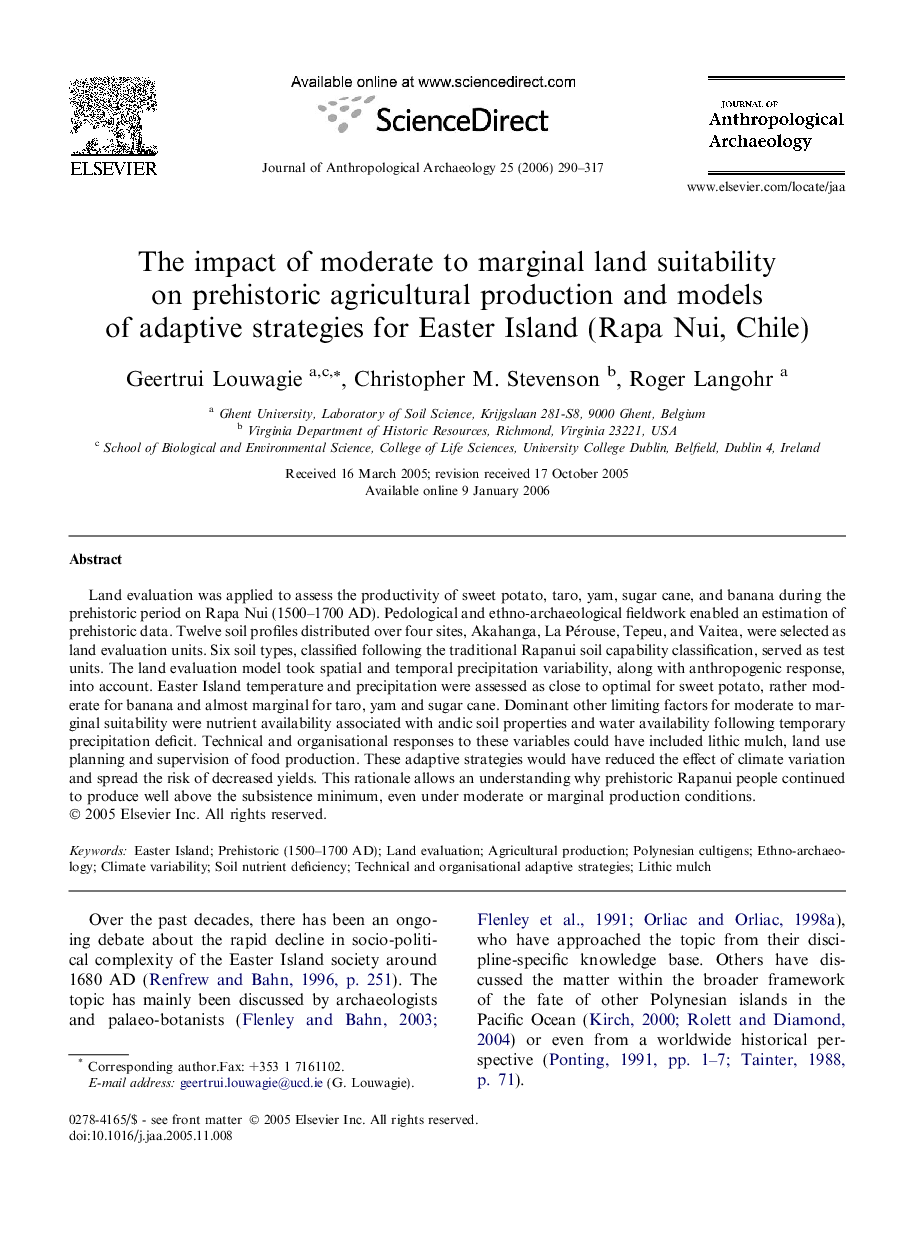| Article ID | Journal | Published Year | Pages | File Type |
|---|---|---|---|---|
| 1035232 | Journal of Anthropological Archaeology | 2006 | 28 Pages |
Land evaluation was applied to assess the productivity of sweet potato, taro, yam, sugar cane, and banana during the prehistoric period on Rapa Nui (1500–1700 AD). Pedological and ethno-archaeological fieldwork enabled an estimation of prehistoric data. Twelve soil profiles distributed over four sites, Akahanga, La Pérouse, Tepeu, and Vaitea, were selected as land evaluation units. Six soil types, classified following the traditional Rapanui soil capability classification, served as test units. The land evaluation model took spatial and temporal precipitation variability, along with anthropogenic response, into account. Easter Island temperature and precipitation were assessed as close to optimal for sweet potato, rather moderate for banana and almost marginal for taro, yam and sugar cane. Dominant other limiting factors for moderate to marginal suitability were nutrient availability associated with andic soil properties and water availability following temporary precipitation deficit. Technical and organisational responses to these variables could have included lithic mulch, land use planning and supervision of food production. These adaptive strategies would have reduced the effect of climate variation and spread the risk of decreased yields. This rationale allows an understanding why prehistoric Rapanui people continued to produce well above the subsistence minimum, even under moderate or marginal production conditions.
